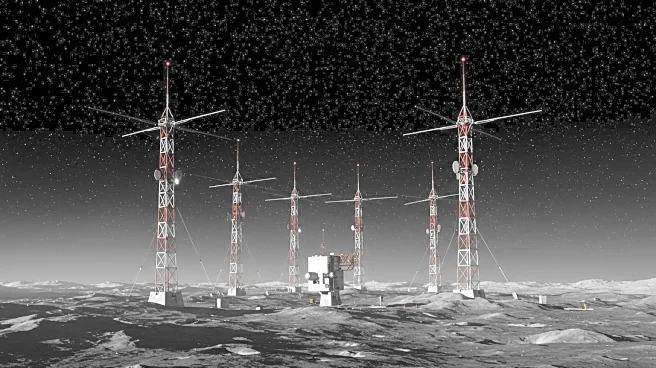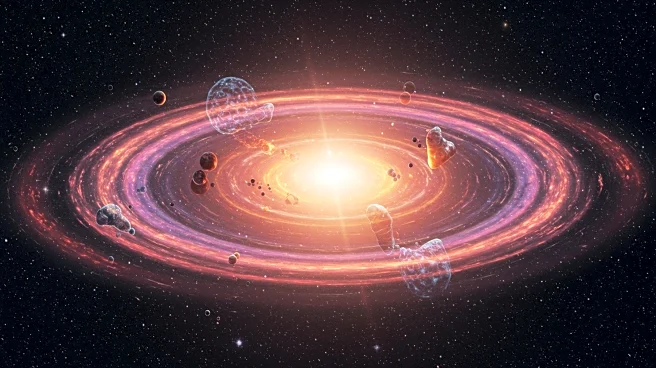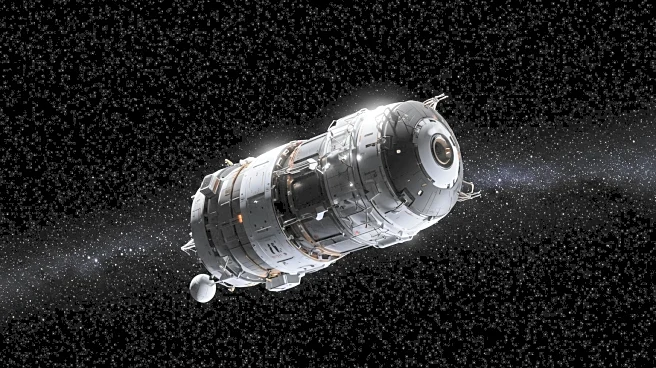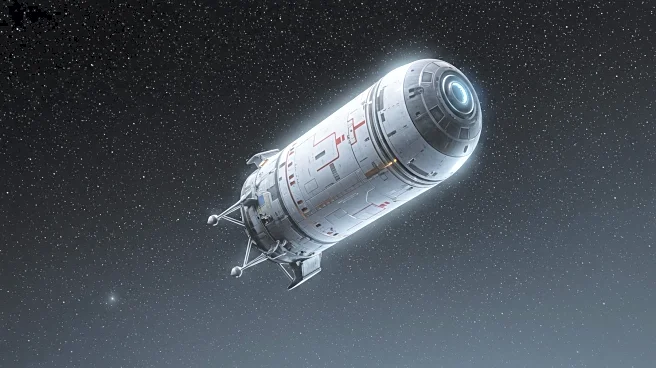What's Happening?
Astronomers are exploring the potential of using radio telescopes on the Moon to study exoplanet magnetic fields, which are difficult to detect from Earth due to the ionosphere. A new white paper suggests that the Moon's lack of an ionosphere makes it an ideal location for such observations. The study, led by Dr. Jake Turner from Cornell University, highlights the importance of auroral emissions in detecting these magnetic fields. The paper discusses proposed missions like the FarView Observatory and FARSIDE, which aim to revolutionize the study of exoplanetary magnetospheres by utilizing the Moon's unique environment.
Why It's Important?
Understanding exoplanet magnetic fields is crucial for assessing their habitability, as these fields protect planets from harmful cosmic radiation. The proposed lunar radio arrays could provide unprecedented insights into the magnetic properties of exoplanets, potentially identifying habitable worlds. This research could significantly advance our knowledge of planetary systems beyond our own, influencing future space exploration and the search for extraterrestrial life. The ability to detect magnetic fields from the Moon could also refine models of planetary formation and evolution, offering a new perspective on cosmic dynamics.
What's Next?
The development of lunar radio telescopes, such as the FarView Observatory and FARSIDE, is expected to progress, with missions like LuSEE-Night already in planning stages. These projects aim to overcome Earth's observational limitations and provide clearer data on exoplanetary magnetic fields. As these initiatives advance, they may lead to collaborations with other observatories studying exoplanet atmospheres, enhancing our understanding of planetary habitability. The scientific community is likely to continue exploring the Moon's potential as a platform for astronomical research, paving the way for future discoveries.











